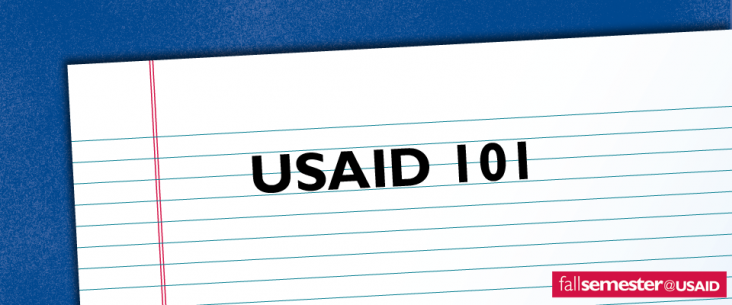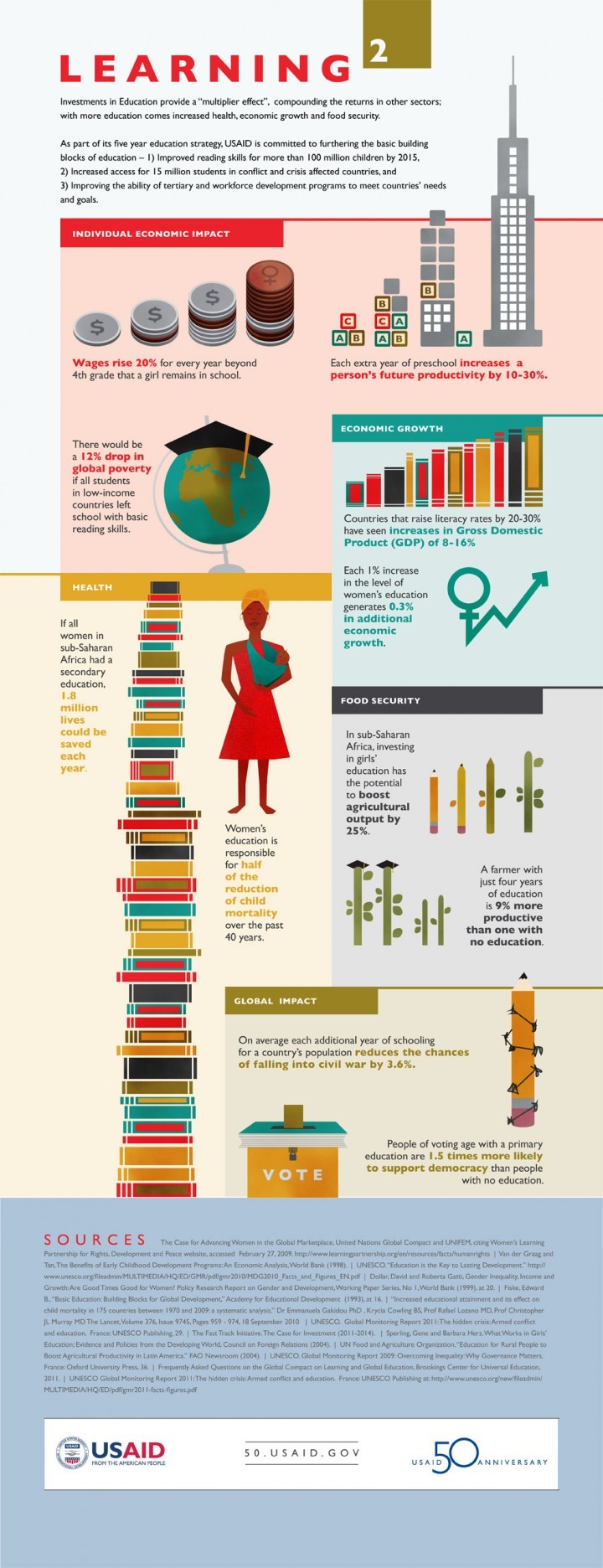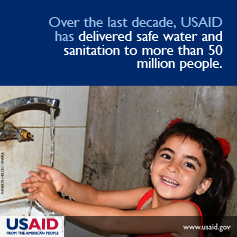
USAID brings together the technology, resources and global imperative to meet the challenges of improving lives around the world. We invite you to explore this website with us this fall semester and learn about how USAID is bringing a new spirit of entrepreneurship and results-based development to helping people around the world build their own path out of poverty.
Each month, we will share new learning materials on our site, so be sure to stay tuned in and join the conversation! And don't forget to vist our fall schedule to see when USAID will be on a campus (or chatroom) near you!
- September: Science, Technology, and Innovation in Development
- October: Energy & Development
- November: Partnerships in Development
- December: Ending Extreme Poverty
History
The U.S. Agency for International Development (USAID) was born out of a spirit of progress, innovation and a reflection of American’s values, character and a fundamental belief in doing the right thing. President John F. Kennedy recognized the need to unite development into a single agency to maximize expertise. In 1961, USAID was created. Since that time, USAID has been a quiet force for progress, fostering a more peaceful and secure world. The spirit of innovation and the belief in doing the right thing have never been stronger. When USAID was created, it brought together several existing foreign assistance organizations and programs. Until then, there had never been a single agency charged with foreign economic development, so with the passage of the Foreign Assistance Act of 1961 (pdf) by Congress, U.S. foreign assistance activities underwent a major transformation.
Leading this transformation was President John F. Kennedy. President Kennedy recognized the need to unite development into a single agency responsible for administering aid to foreign countries to promote social and economic development. On November 3, 1961, USAID was born and with it a spirit of progress and innovation. November 3, 2011 marked USAID's 50th Anniversary of providing U.S. foreign development assistance From the American People. Our workforce and USAID's culture continues to serve as a reflection of core American values--values that are rooted in a belief for doing the right thing.
"There is no escaping our obligations: our moral obligations as a wise leader and good neighbor in the interdependent community of free nations – our economic obligations as the wealthiest people in a world of largely poor people, as a nation no longer dependent upon the loans from abroad that once helped us develop our own economy – and our political obligations as the single largest counter to the adversaries of freedom." – John F. Kennedy
Early International Development Efforts
The modern-day concept of international development assistance took shape after World War II ended in 1945. George C. Marshall, the Secretary of State from 1947 to 1949 provided significant financial and technical assistance to Europe after the war. Famously known as the Marshall Plan, this was a successful effort that allowed Europe to rebuild its infrastructure, strengthen its economy, and stabilize the region.
International Aid Becomes Foreign Policy
Building on the success of the Marshall Plan, President Harry S. Truman proposed an international development assistance program in 1949. The 1950 Point Four Program focused on two goals:
- Creating markets for the United States by reducing poverty and increasing production in developing countries
- Diminishing the threat of communism by helping countries prosper under capitalism
From 1952 to 1961, programs supporting technical assistance and capital projects continued as the primary form of U.S. aid, and were a key component of U.S. foreign policy.
During this time, government leaders established various precursor organizations to USAID, including the:
- Mutual Security Agency
- Foreign Operations Administration
- International Cooperation Administration
International Aid in the 1960s: An Agency is Born
In 1961, President Kennedy signed the Foreign Assistance Act into law and created USAID by executive order. Once USAID got to work, international development assistance opportunities grew tremendously. The time during the Kennedy and Johnson administrations became known as the “decade of development.”
International Aid in the 1970s: A Shift to Basic Human Needs
In the 1970s, the USAID began to shift its focus away from technical and capital assistance programs. Instead, U.S. development assistance stressed a “basic human needs” approach, which focused on:
- Food and nutrition
- Population planning
- Health
- Education
- Human resources development
International Aid in the 1980s: A Turn to Free Markets
In the 1980s, foreign assistance sought to stabilize currencies and financial systems.
It also promoted market-based principles to restructure developing countries' policies and institutions. During this decade, USAID reaffirmed its commitment to broad-based economic growth, emphasizing employment and income opportunities through a revitalization of agriculture and expansion of domestic markets. In this decade, development activities were increasingly channeled through private voluntary organizations (PVOs), and aid shifted from individual projects to large programs.
International Aid in the 1990s: Sustainability and Democracy
In the 1990s, USAID’s top priority became sustainable development, or helping countries improve their own quality of life. During this decade, USAID tailored development assistance programs to a country's economic condition, which meant that:
- Developing countries received an integrated package of assistance
- Transitional countries received help in times of crisis
- Countries with limited USAID presence received support through nongovernmental organizations (NGOs)
USAID played a lead role in planning and implementing programs following the fall of the Berlin Wall in 1989. USAID programs helped establish functioning democracies with open, market-oriented economic systems and responsive social safety nets.
International Aid in the 2000s: War and Rebuilding
The 2000s, brought more evolution for USAID and foreign assistance with government officials once again calling for reform of how the agency conducts business. With the Afghanistan and Iraq wars in full swing, USAID was called on to help those two countries rebuild government, infrastructure, civil society and basic services such as health care and education. The Agency began rebuilding with an eye to getting the most bang out of its funding allocations. It also began an aggressive campaign to reach out to new partner organizations – including the private sector and foundations – to extend the reach of foreign assistance.
Today, USAID staff work in more than 100 countries around the world with the same overarching goals that President Kennedy outlined 50 years ago – furthering America's foreign policy interests in expanding democracy and free markets while also extending a helping hand to people struggling to make a better life, recover from a disaster or striving to live in a free and democratic country. It is this caring that stands as a hallmark of the United States around the world.
Learn more about what USAID does today:
Infographic









Comment
Make a general inquiry or suggest an improvement.